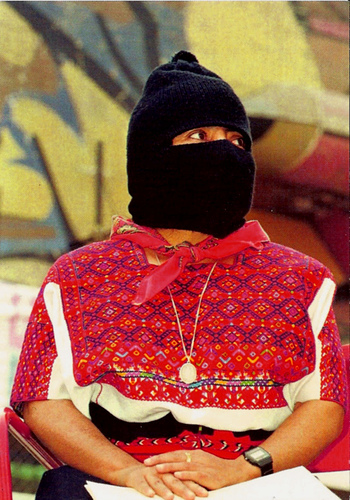| HOME | BIOGRAPHY | TIMELINE | ACTIVISM | BIBLIOGRAPHY | LINKS | LETTER | RACHEL |
|---|
Comandante Ramona
Comandante Ramona, a Tzotzil female guerilla and activist, was born near San Andrés de Larrainzer, Mexico in 1959. She was closely associated with Mexico’s Subcomandante Marcos when he launched his Zapatista rebellion in Chiapas, Mexico in 1994. Together they lead the guerilla group called the Zapatista National Liberation Army (EZLN). The top level of leadership within the EZLN is the Clandestine Indigenous Revolutionary Committee (CCRI), which is responsible for organizing communities and regions. Comandante Ramona was among the members of the CCRI. Comandante Ramona led the rebels into the town of San Cristobal de las Casas on New Year’s Day 1994 demanding indigenous rights for the people of Chiapas while protesting the North American Free Trade Agreement (NAFTA) which came into effect that day. The EZLN in their efforts called for land, jobs, housing, food, healthcare, justice, and democracy, while demanding that an end be put to the hundreds of years of exploitation and marginalization of indigenous peoples and peasants of Chiapas.
After the rebellion ended Comandante Ramona was sent to the first peace talks with the Mexican government in February 1994. She later traveled to Mexico City to help establish the National Indigenous Congress on October 12, 1996. Ramona became an empowering figure among the indigenous women in Chiapas. Prior to the Zapatista uprising, she was a leading women’s rights activist, helping write the “Revolutionary Law on Women” in 1993. Comandante Ramona died near San Cristobal, Mexico on January 6, 2006 due to kidney failure. Comandante Ramona’s real name and details of her pre-revolutionary life remain unknown. Although she was not from the U.S., Comandante Ramona’s activism involved U.S.-Mexico relations and U.S. politics, such as the passing of the NAFTA, which sparked the Zapatista uprising.
